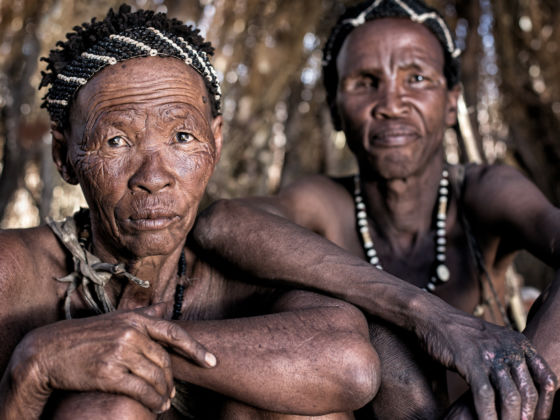
People of the Earth: San tribe
The first people
Deeply rooted in their nomadic culture and in a symbiotic relationship with the animals and plants, the San or “Bushmen” are the original inhabitants of South Africa, aboriginal to sub-Saharan Africa. Their unique hunter-gatherer culture stretches back over 20 000 years. San genetic origins reach back to over one million years, revealing the oldest gene pattern amongst modern humans. Evolutionary studies support the evidence indicating that San are the closest surviving people to the original Homo sapiens and ancestors of contemporary humanity.
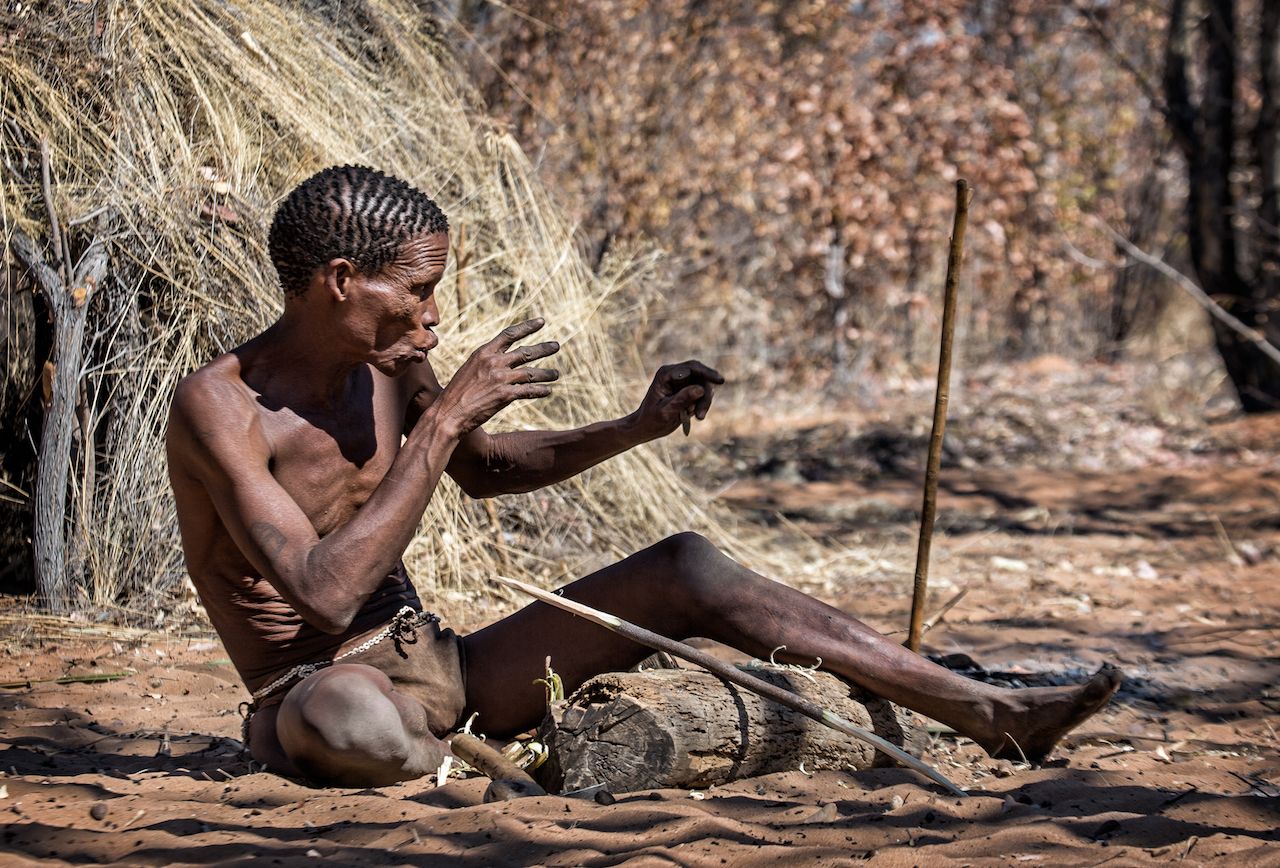
Stone Age
San civilization goes back to the Stone Age. The San did not use metals; all of their weapons were made of wood, stone, and bones, and instead of pottery, ostrich eggshells were used for storing liquids. They were known to live along the coast, fishing for crayfish, mussels, and seals as proven by a large number of bones found in coastal caves. These caves record their rich heritage in the form of rock art, extending all the way from the Kalahari to the modern-day Kingdom of Lesotho. Rock paintings were made using natural pigments such as manganese oxide, charcoal, or bird droppings, and the most common motives drawn were of people and animals, very often the Eland antelope, still regarded as a sacred spirit.

Sounds of the desert
Bushmen speak a variety of languages, all of which incorporate ‘click’ sounds represented in writing by symbols such as ! or /. San indigenous identity is based on their language and culture, families within a clan would speak a common language but neighboring clans would usually speak a different tongue, with a fair degree of similarity and understanding between them.
San are small in stature with light skin, which wrinkles very early in life giving them distinct, weathered appearance. They live in the vast expanse of the Kalahari Desert, which is divided among 3 countries — South Africa, Botswana and Namibia. Less than 3,000 of the tribe members have retained their traditional lifestyle of hunters and gatherers, following ancient cultural practices. In sub-Saharan Africa, there are many different Bushman groups, with no collective name for themselves, hence the fact that the terms ‘Bushman’, ‘San’, ‘or ‘Basarwa’ are used interchangeably.
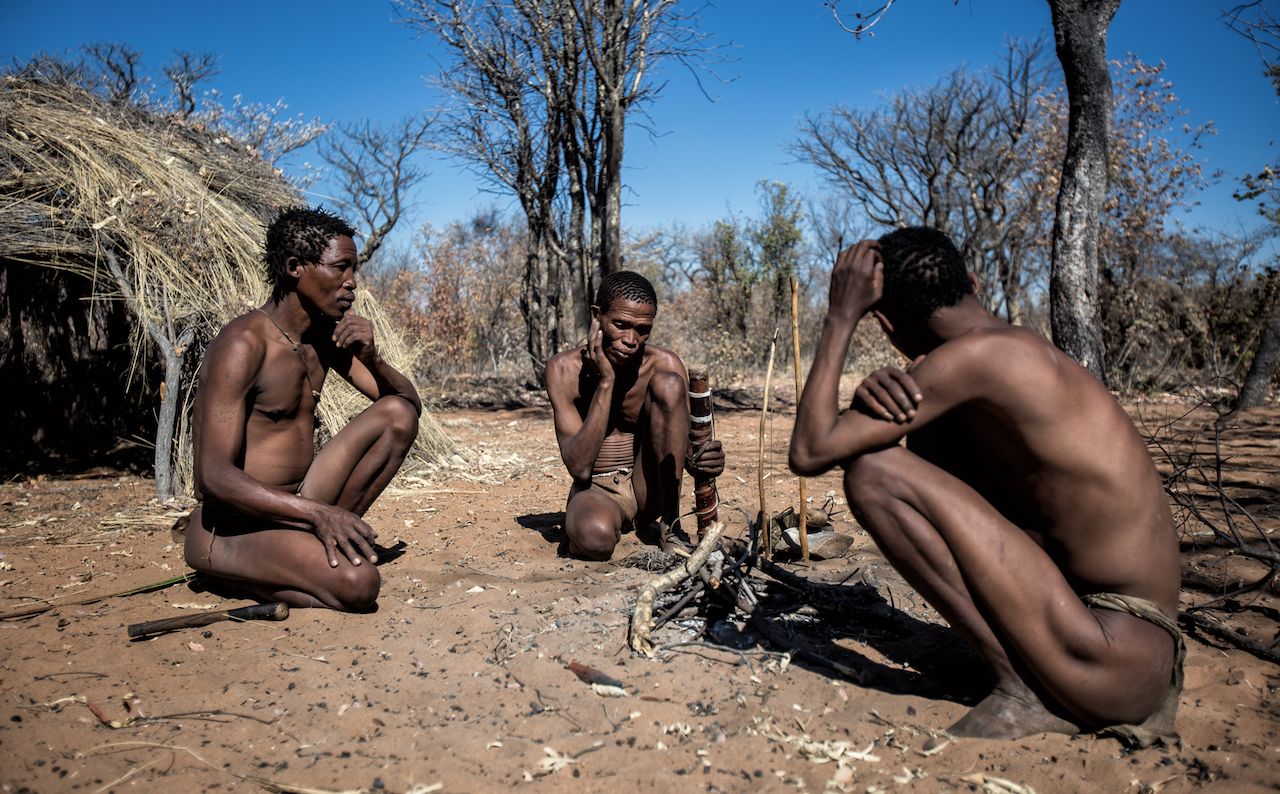
Owner and the nomad
For thousands of years, San hunter-gatherer lifestyle remained relatively unchanged, as they had no concept of the ownership of land or animal. The change came with the acquisition of property, namely the sheep from North Sudanese tribes and cattle from Bantu. Newly found ownership have quickly led to conflict between different groups and rapid evolvement of a social, and economic hierarchy in which the status quo was determined by wealth in cattle and sheep.
San are always on the move in search of game and plant foods, therefore, they do not build permanent settlements, rather they use rock shelters or open camps, the choice depending on weather conditions. Bushmen are a nomadic tribe, but within fairly limited boundaries, distance governed by the proximity of other families and clans. When there are no other bordering clans, migrating tribe may stretch further out, as far as is needed to ensure a safe supply of food and water. Generally, the chief controls groups’ resources and all decisions are made by consensus of the tribe.
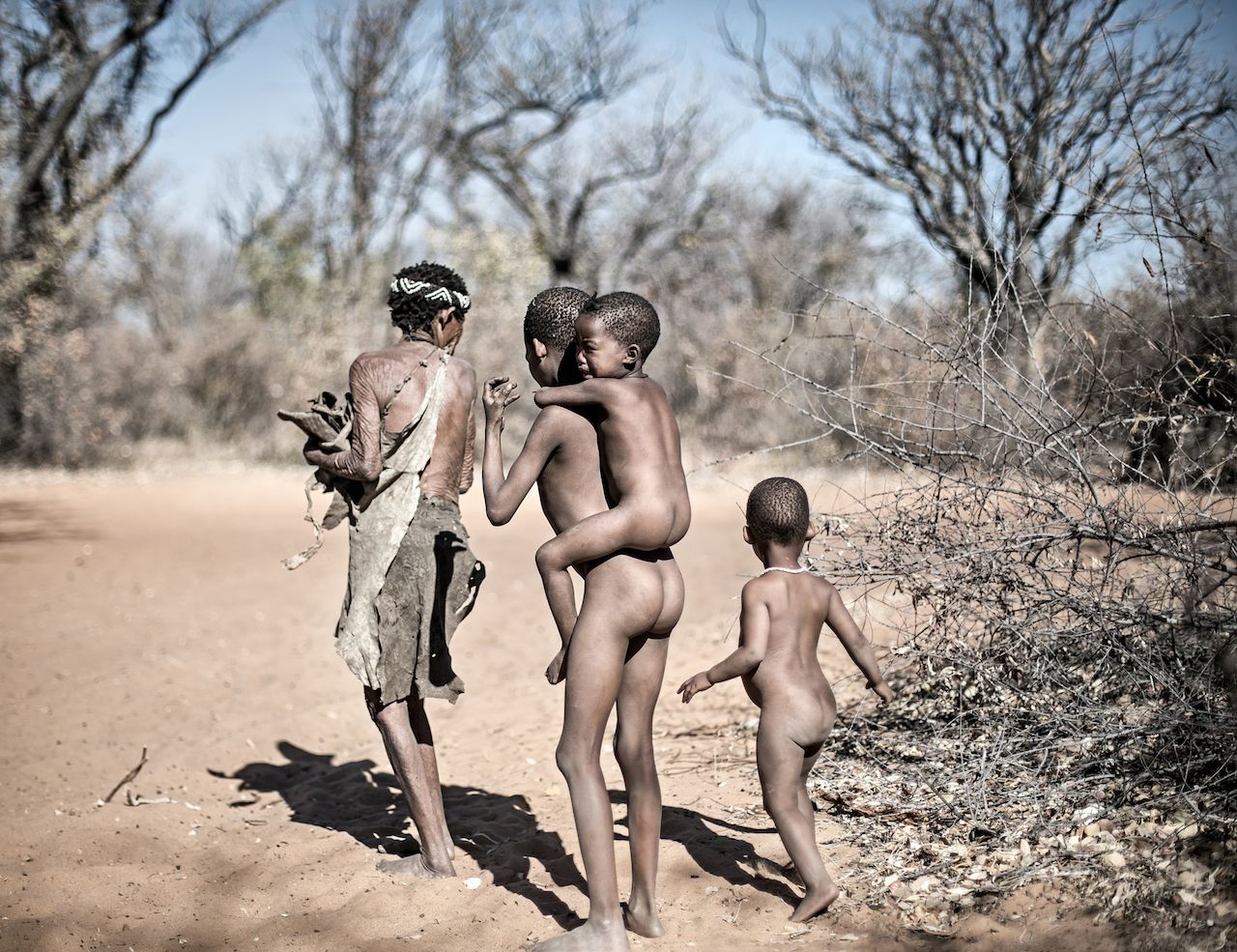
Social structure
San social structure is not totally tribal, it resembles loosely knit family culture where decisions are made by universal discussion and agreement by consensus. An individual’s opinion is naturally weighted according to their level, skill, and experience in the particular field of discussion. The roles of men and women are very distinct and rarely overlapping, which is a characteristic almost universal amongst hunter/gatherers around the world. Decisions are made based on survival needs, encouraging the most efficient utilisation of available skills and resources. Despite what is often perceived as a very gender-divided society, the importance of women is very high within the group and their opinions often take precedence, particularly where the food is concerned.

The hunter
The San are famous for their tracking skills. Using traps, bows, spears, and arrows coated with various toxins, such as snake venom, poisonous caterpillar, or a toxic plant, they are able to track animals for days across the desert plains. The poisons used by hunters will not be dangerous for consumption, as the hunter will simply remove the flesh where the arrow pierced the animal body. Each hunter is equipped with a cross and the bow, and leather bag containing medicine, tools, arrows, and amulets. San can easily determine the age and sex of the pray by examining the signs animal left behind, reading the bush as an open book. When a hunter’s arrow hits the animal, sortie will go to where it was standing and patiently track it down until the animal falls. Exceptional skill at tracking made San hunters very desired by armies, game hunters, and farmers to pursue guerrillas, game, and poachers.
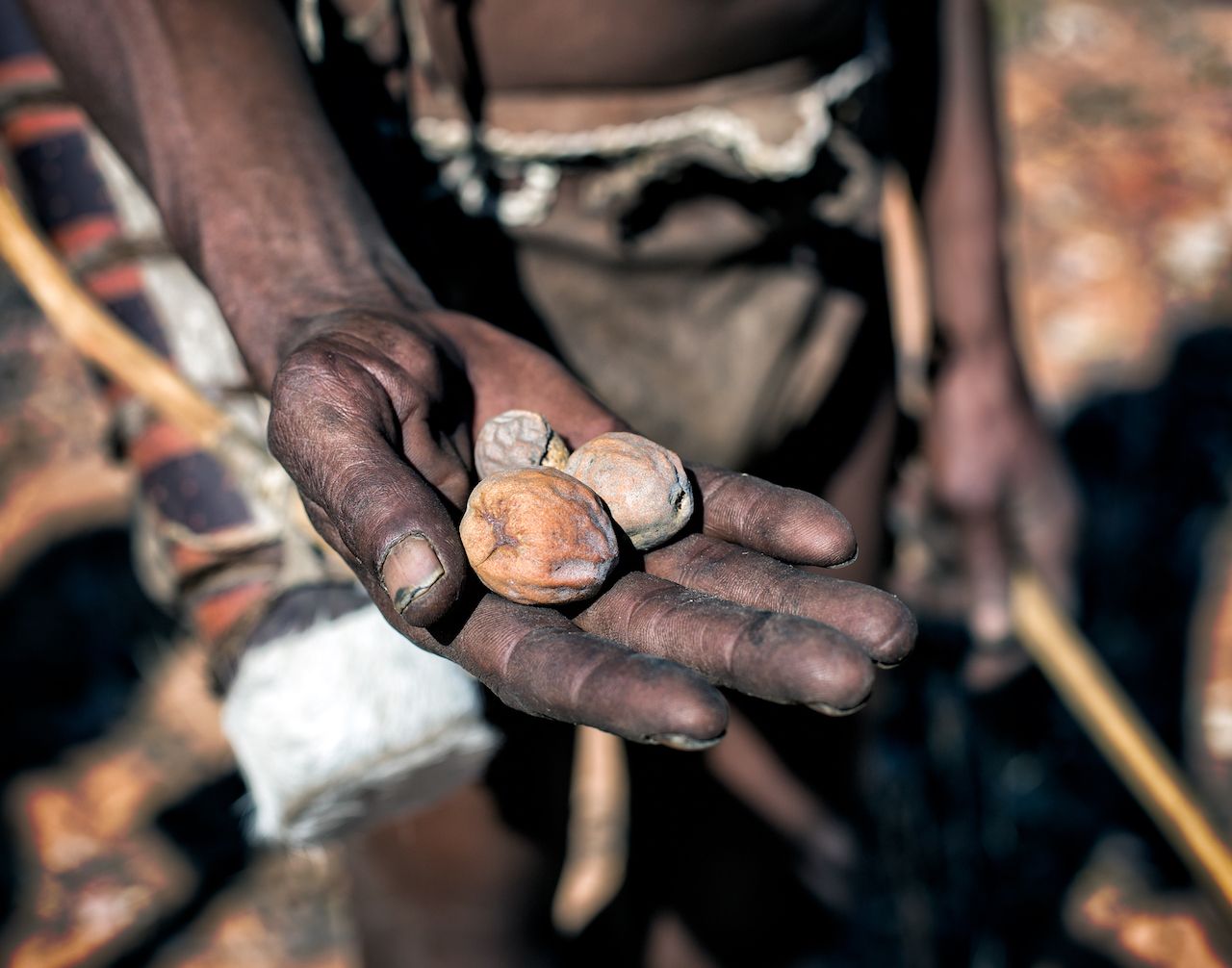
The gatherer
Traditionally, women spent 3-4 days a week gathering wild plants, going out in groups to search for edible or medicinal plants. There are about 400-500 local plants known to Bushmen, providing not only balanced nutrition but also a source of hydration, as the moisture from roots is collected in ostrich eggshells during the drought. Plants are used in a similar way to western phytomedicine, treating wounds and illnesses or during healing ceremonies in which the healer would burn plants to make rain, trance to heal an ailment, or perform a charm to bring fertility.

Sacred spirits
Boys come of age when they kill their first antelope, and a girl becomes a woman upon her first menstruation, isolated in her hut. On this day, the tribe will perform the Eland Bull Dance, imitating the mating ritual of the Eland antelopes. The San believe that this dance brings peace and beauty to the girl and make her safe from hunger and thirst. San marriages are simple, the groom gives the Elands’ heart fat to bride’s parents, and the bride is anointed with this fat.
Despite what is often perceived as a very gender divided society, the importance of women is very high within the group and their opinions often take precedence, particularly where the food and child rearing is concerned. Although San men are very dotting parents, it’s the women who are the primary care givers in San social structure. In the photo below, you can clearly see a child in distress, seeking his mom, who was dancing on the very far end. HHis cry for help is immediately noted and in this shot, the child is lifted up, cuddled, kissed and caressed by each member of the tribe passing him to into the safety of the mother’s arms.
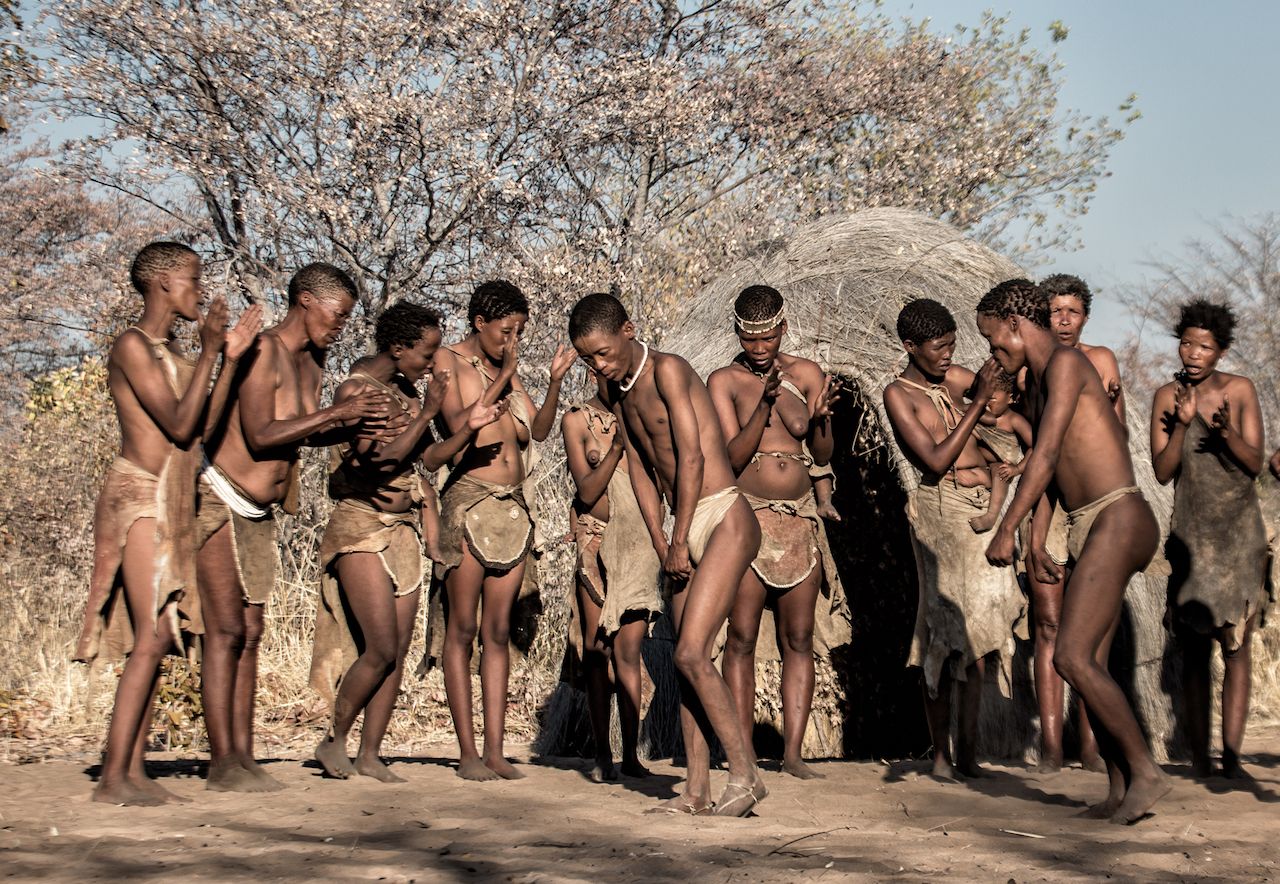
Medicine man
An essential element of the San cultural identity is their medicine dance, in which the rhythm is used to heal the individual. The medicine men have a supernatural potency within them, called n/um, which enables shaman to cure sickness. To activate n/um San dance and sing, creating sounds and a tempo that heats the supernatural force within, causing it to rise up to their heads to evoke trance.

Between two worlds
San believe in the spiritual and the material world. To enter into the spirit world, trance has to be initiated by a shaman through the hunting of power animals. When a power animal, such as an elephant or an eland antelope is killed, a link opens up between the two worlds. The eland appears in some of the rituals: boys’ first kill, girls’ puberty, marriage, and the trance dance. When this happens the shaman dances and reaches a trance in order to enter the spirit world. Once trance is achieved, the shaman is able to heal and protect people from sickness, evil spirits, control weather, see the future, ensure good hunting, and look over the general well-being of the tribe.
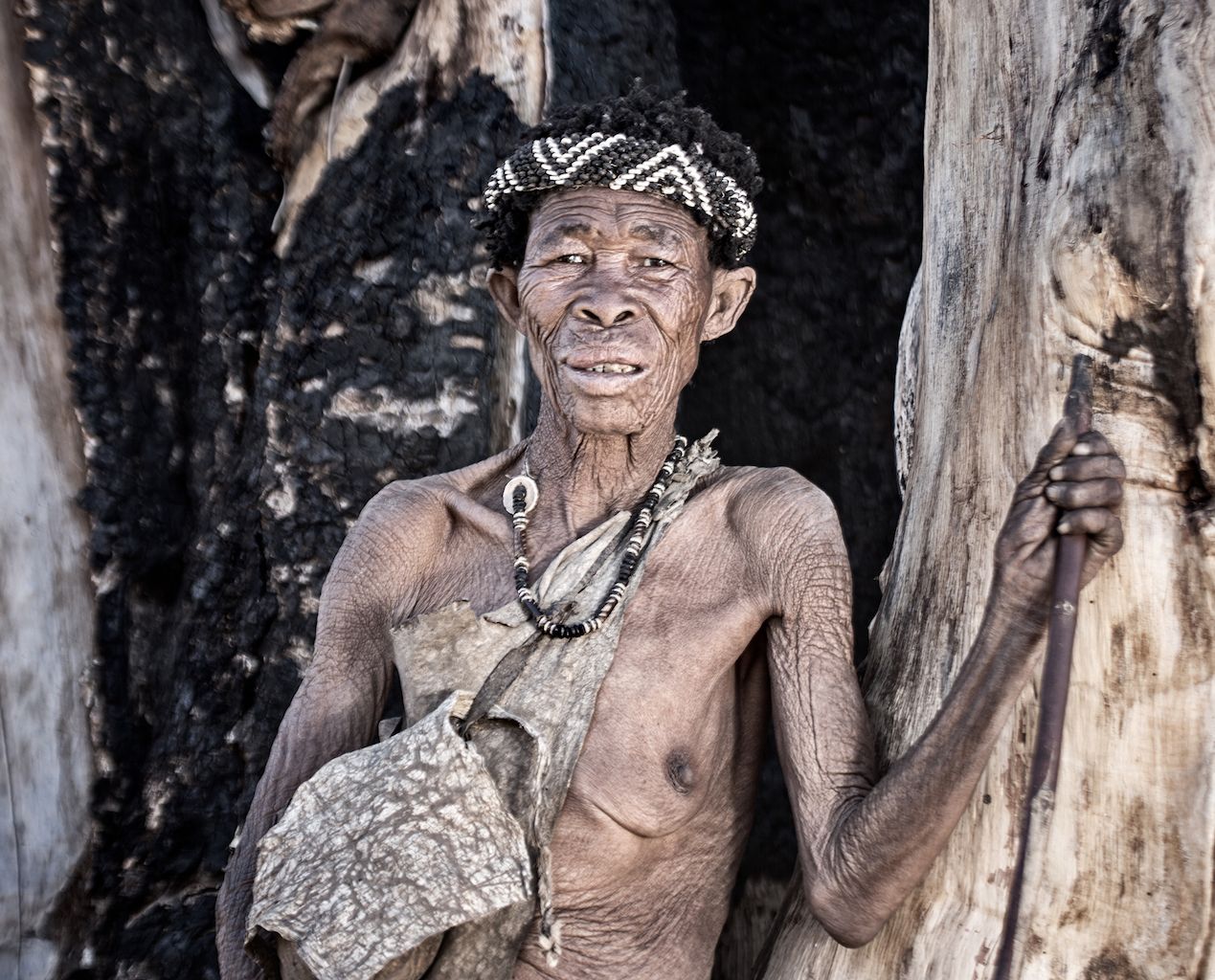
The sands of time
Southern Bushmen believe in spirits of the dead, but not as part of ancestor worship. The spirits are only vaguely identified and are thought to bring sickness and death. If a tribe member dies, the group will leave and never make a camp on this place again. However, if they arrive in a place of burial, they will throw pebbles on the grave and quietly say few words to the spirits to ensure good luck. They never step on the grave, as they believe that spirits are still active in the area above the grave. Shamans have contact with lesser gods, associated with illness and death, when they are performing trance dance. After death, the soul goes to the great god’s house in the sky, but the dead person continues to influence the life of those alive.
*”Elderly!” Kung Bushman’s answer to how old he was (Bjerre, p104)
